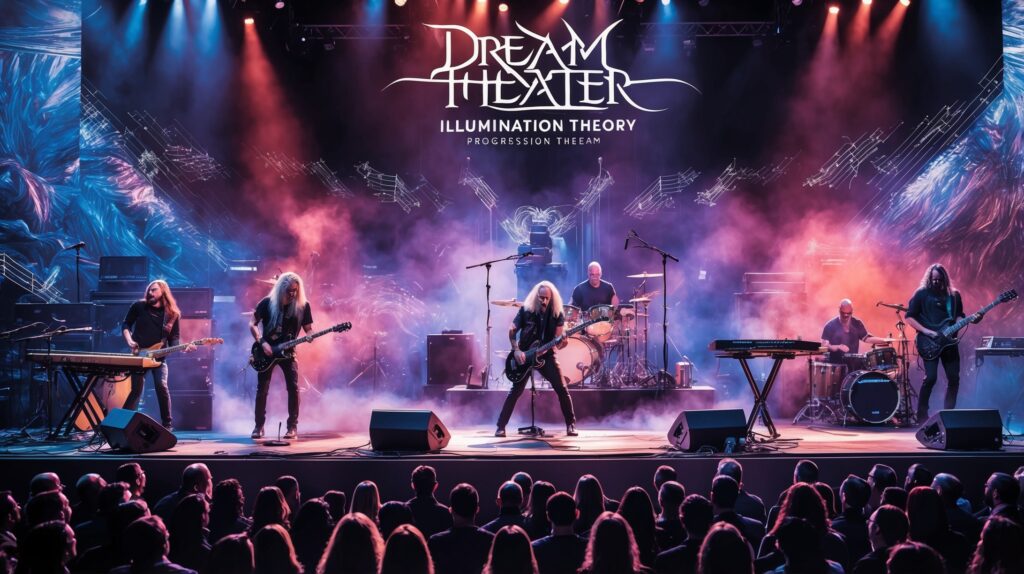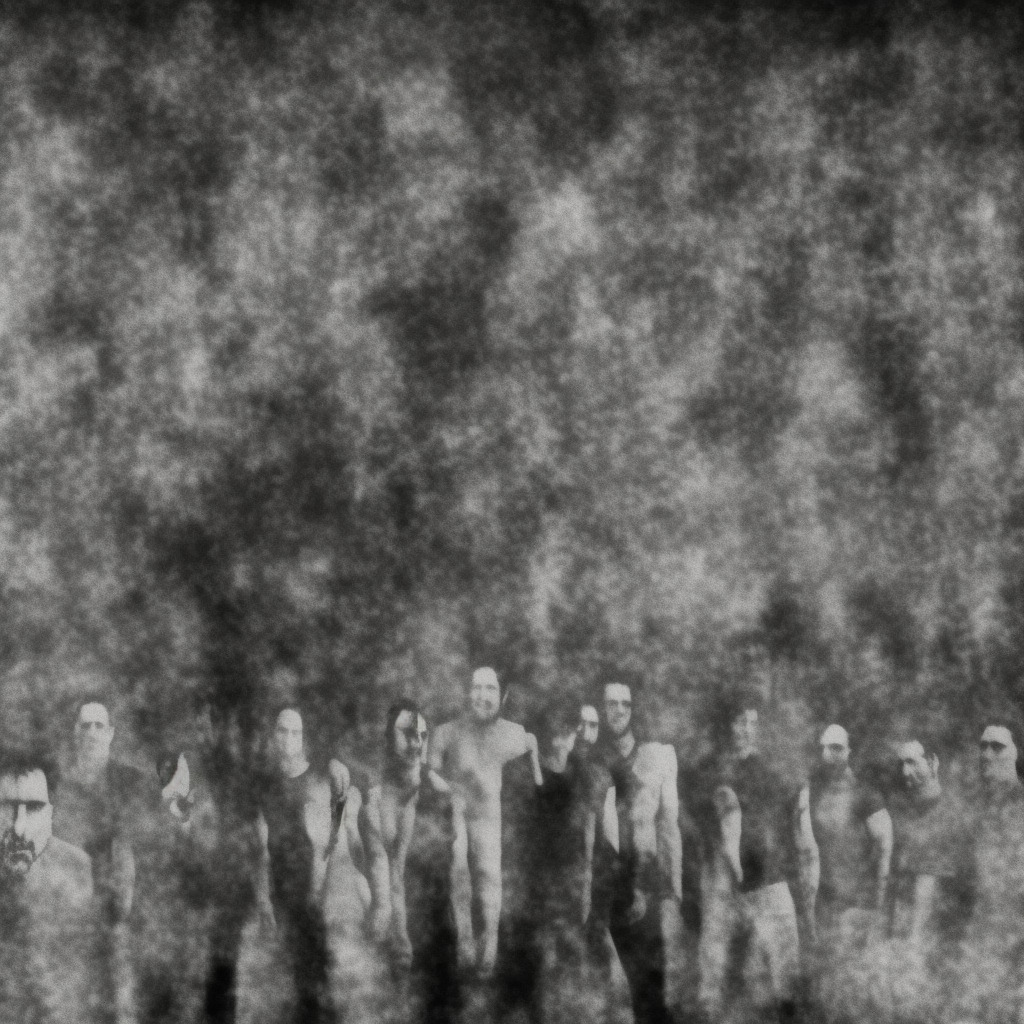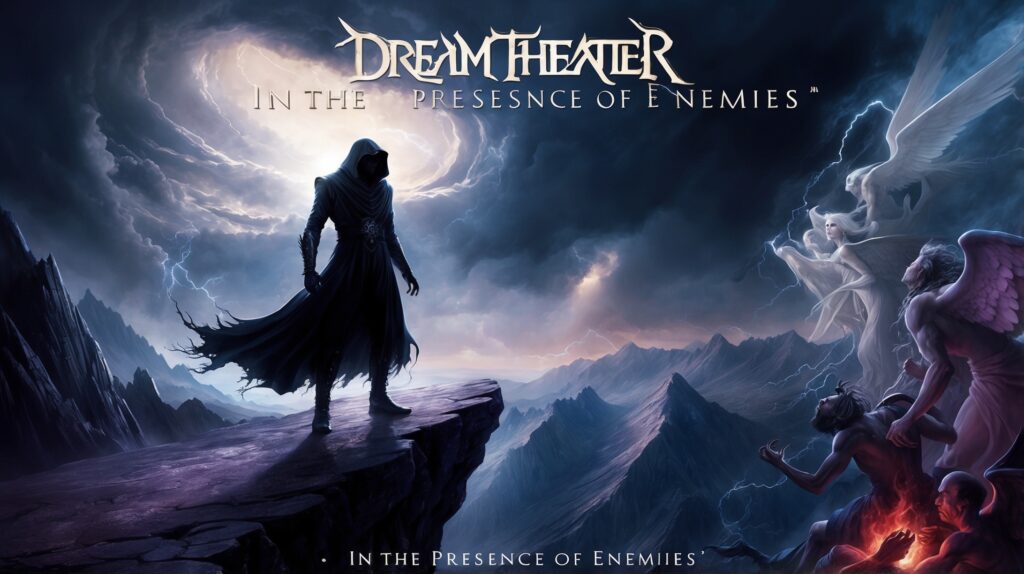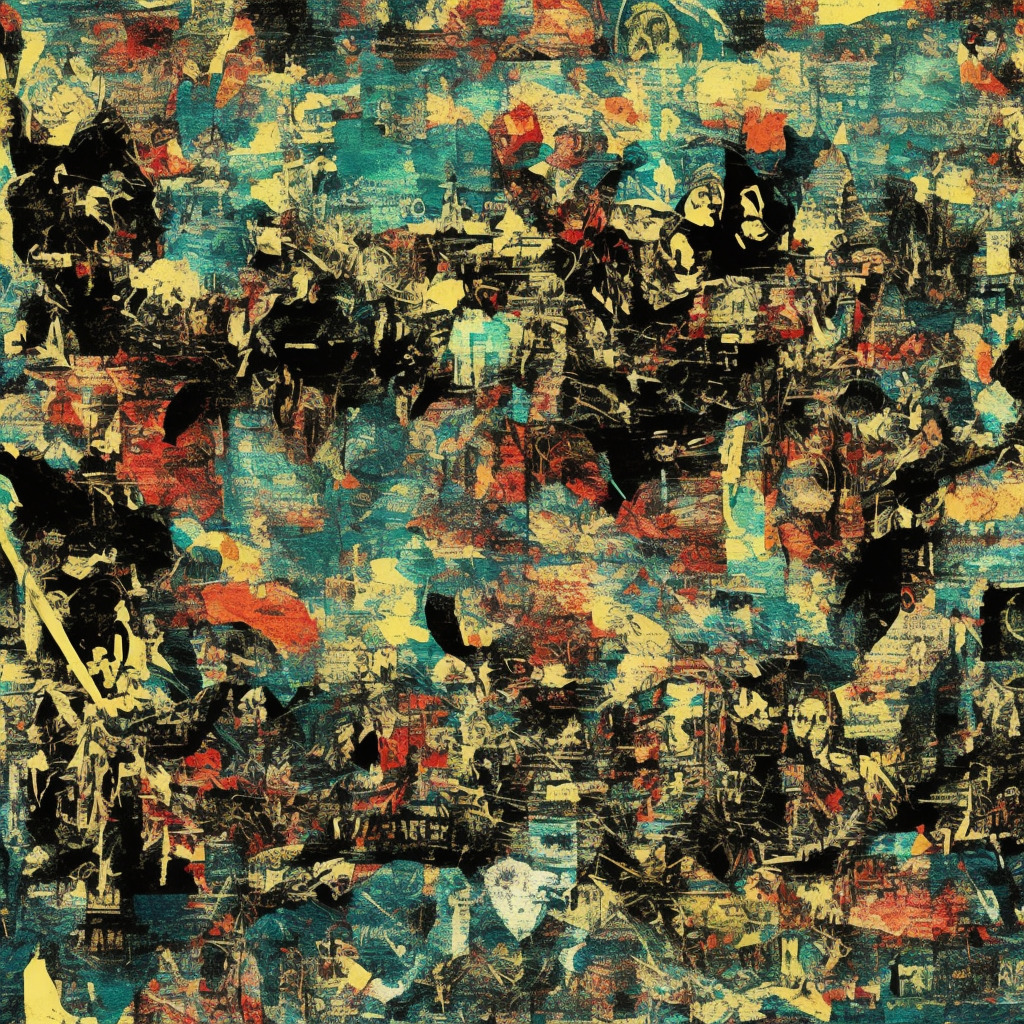Dream Theater: Architects of Progressive Metal
Explore Dream Theater’s profound influence on progressive metal through their iconic song ‘Illumination Theory’. Delve into the band’s history, key transformations, and visionary artistry shaping their illustrious career.
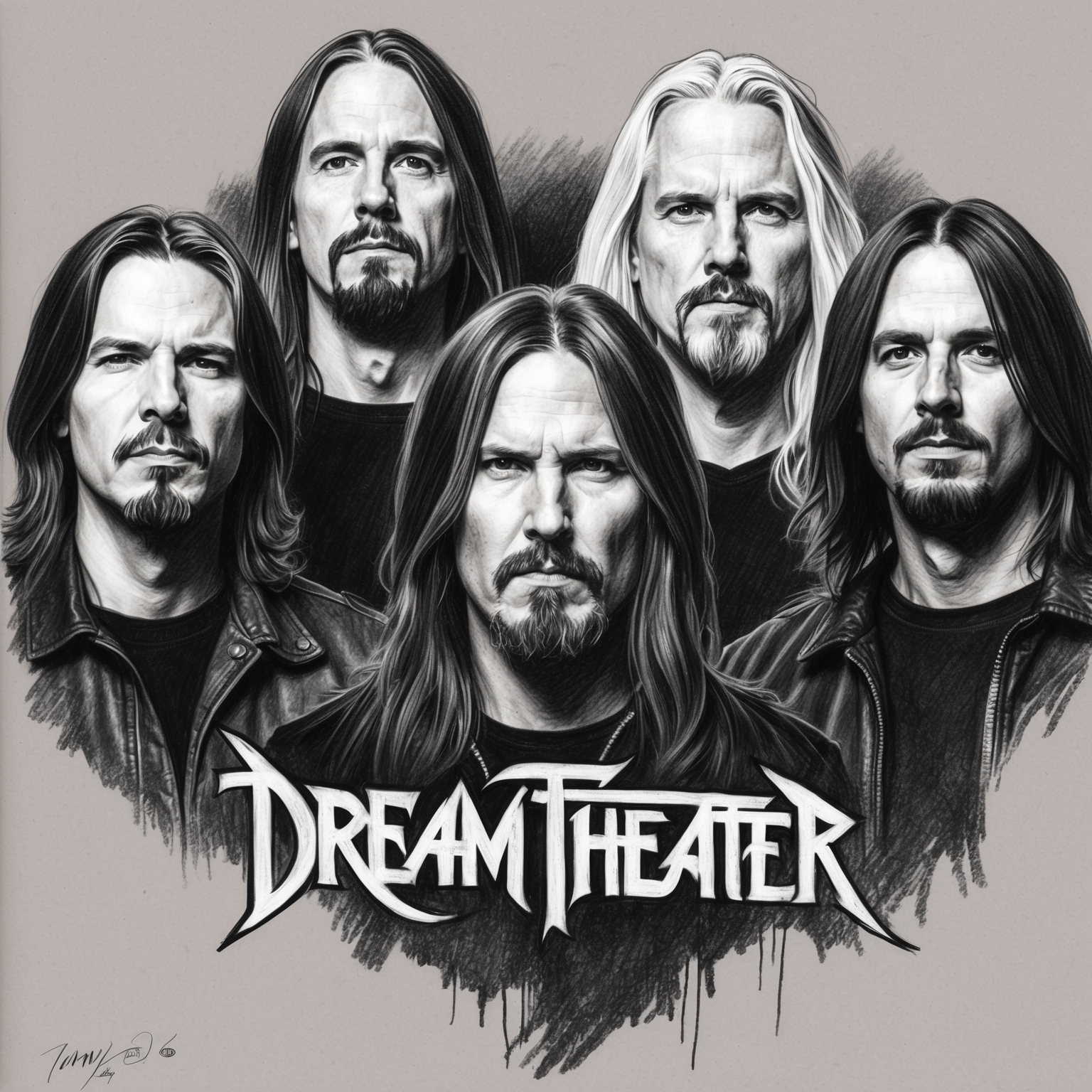
Dream Theater, renowned for their technical prowess and innovative approach to progressive metal, has left an indelible mark on the music industry. The band, co-founded by John Petrucci, John Myung, and Mike Portnoy in 1985, emerged as a torchbearer of complex musical compositions and symphonic narratives. Their song ‘Illumination Theory’, off the 2013 album ‘Dream Theater’, represents a pivotal moment in their career, encapsulating Dream Theater’s mastery of storytelling through music.
The era surrounding its creation was one of introspection and transformation for the band. Originally hailing from Boston, the members rapidly gained traction with their debut album ‘When Dream and Day Unite’. However, it was with their 1992 breakthrough album, ‘Images and Words’, that they truly cemented their place in the progressive music scene. As pioneers of the genre, they not only navigated but also expanded the boundaries of progressive metal, crafting intricate soundscapes that have challenged and enthralled audiences worldwide.
As the band entered the 2010s, Dream Theater redefined their sound by exploring even more elaborate themes and compositions, which are evident in ‘Illumination Theory’. This era was marked by significant collaborations, internal changes, and an evolution in their creative process. The departure of drummer Mike Portnoy in 2010 and the induction of Mike Mangini introduced a new dynamic. Each member, past and present, from the original line-up to the current roster, has contributed uniquely to the band’s rich tapestry of sound, bringing distinct influences and expertise.
The Maestro Behind the Magic: John Petrucci’s Role in ‘Illumination Theory’
John Petrucci, Dream Theater’s guitarist and principal composer, is the enigmatic force behind ‘Illumination Theory.’ With his background in progressive rock and metal, Petrucci blends intricate technical flair with deep emotional storytelling. His collaboration with Jordan Rudess and unique compositional techniques make ‘Illumination Theory’ a masterpiece in Dream Theater’s illustrious catalog.

John Petrucci, the renowned guitarist and composer for Dream Theater, has long been regarded as a pivotal force in shaping the band’s signature sound. Born on July 12, 1967, in Long Island, New York, Petrucci’s early passion for guitar led him to attend the Berklee College of Music, where he honed his craft and later co-founded Dream Theater. Over the decades, he has established himself not only as a virtuosic guitarist but also as a masterful composer, with a keen ability to blend complex musical themes with emotive storytelling.
Petrucci’s musical style is heavily influenced by a blend of progressive rock, classical, and metal genres. Known for his technical proficiency and intricate compositions, Petrucci draws inspiration from a variety of sources, including classical composers like Bach and contemporary rock legends such as Steve Vai. This eclectic blend of influences allows Petrucci to create compositions that are both innovative and rooted in musical traditions, as evident in the epic grandeur of ‘Illumination Theory.’
Throughout his career, Petrucci has often collaborated with his Dream Theater bandmates, most notably keyboardist Jordan Rudess. Their partnership is a testament to the cohesive sound that defines Dream Theater’s work. In ‘Illumination Theory,’ Petrucci’s compositional skills shine through as he deftly weaves together complex time signatures and rich, melodic passages. His role in the song’s creation is a testament to his ability to merge intricate guitar lines with atmospheric soundscapes, creating a piece that resonates both musically and emotionally with listeners.
Exploring the Recognition and Interpretations of ‘Illumination Theory’
While ‘Illumination Theory’ hasn’t received major awards or been widely covered, it remains a fan-favorite for its intricate composition and influence in progressive metal.

Dream Theater’s magnum opus “Illumination Theory” stands as a towering achievement in the world of progressive metal, both for its intricate composition and its thematic depth. However, despite the song’s complex beauty and technical prowess, it has not yet received any major music awards or nominations. This is perhaps a testament to the niche yet fervent following the genre commands, often residing outside mainstream award circuits. Nevertheless, the track has been highly praised by fans and critics alike for its ambitious structure and emotional weight, securing its place as a beloved cornerstone in Dream Theater’s discography.
While “Illumination Theory” itself has not been widely covered by other artists, its influence can be seen across the progressive metal and rock genre. The track reflects Dream Theater’s mastery of blending classical music influences with rock and metal, inspiring many contemporary and budding musicians who idolize the band’s technical skill and storytelling prowess. The song’s sprawling structure and complex arrangements present a formidable challenge for any musician attempting to interpret it. As of now, there have been few known notable covers, but its influence remains apparent in the works of progressive artists that continue to emerge.
“Illumination Theory” has not been featured in movies, television shows, or video games, likely due to its formidable length and intricate nature, which doesn’t easily lend itself to conventional entertainment media formats. However, the song serves as a staple in Dream Theater’s live performances, where its grandeur and intricacy can be fully actualized in front of a devoted audience. Live renditions of “Illumination Theory” have arguably contributed most to its accolades and recognition, showcasing Dream Theater’s unparalleled expertise and their ability to captivate audiences with their musical narratives, given its demanding instrumental and vocal performances.
Navigating the Chart Waves: The Journey of ‘Illumination Theory’
Explore the nuanced chart journey of ‘Illumination Theory’ by Dream Theater. Although not a chart sensation, the song’s complex structure resonated with fans and critics, showcasing the band’s dedication to artistic depth over mainstream success.
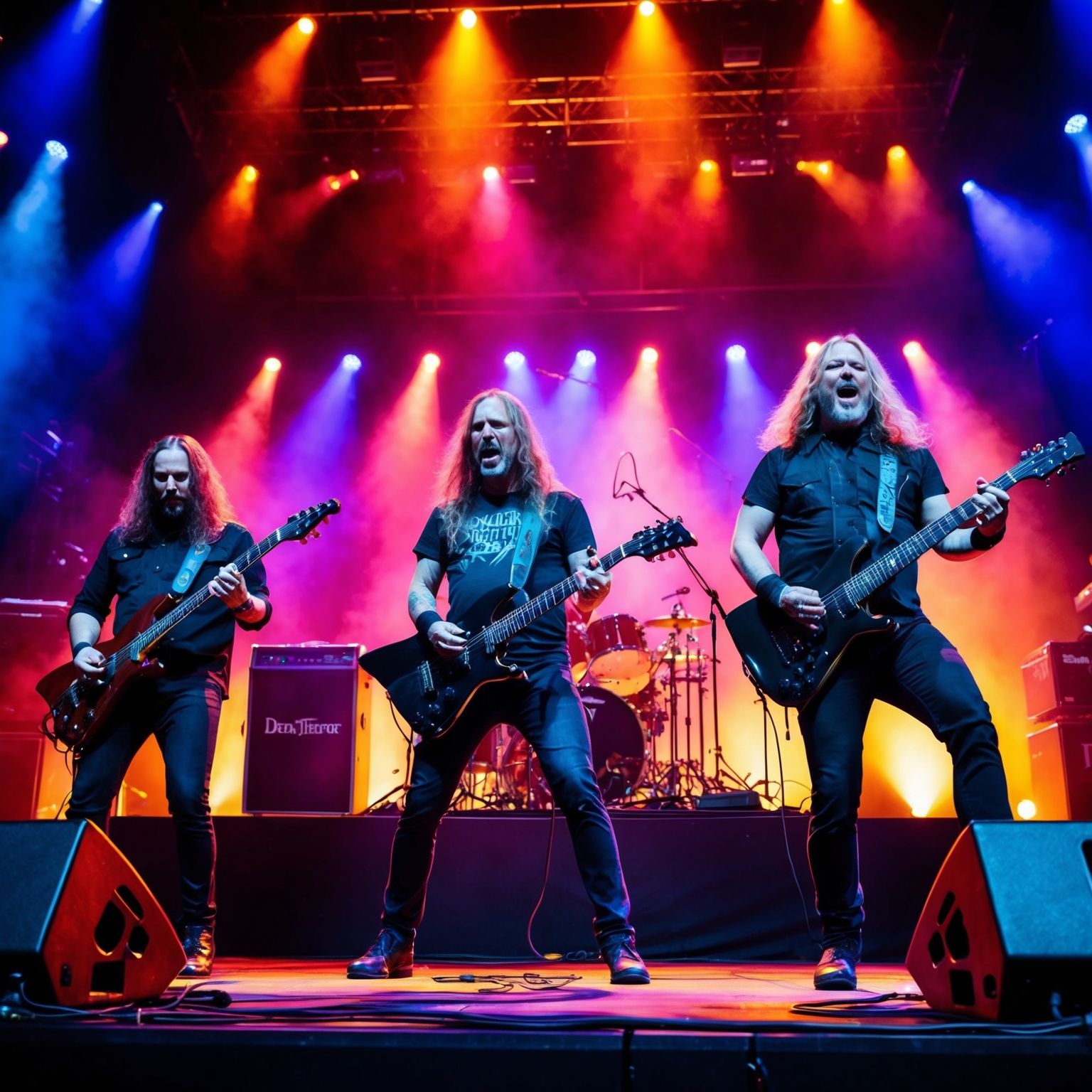
Despite ‘Illumination Theory’ not being the shimmering jewel in Dream Theater’s chart-topping crown, its success rests on other pivotal factors. Released in 2013 as part of the band’s self-titled album, ‘Illumination Theory’ struck a chord with the devoted fan base, although it did not spearhead major chart positions. The song’s long-form progressive metal structure, lasting over 22 minutes, with its symphonic flair and intricate musical landscapes, made it a masterpiece that resonated particularly with the connoisseurs of the genre over mainstream audiences.
In comparison to other mainstream tracks, ‘Illumination Theory’ may not have captured widespread chart accolades due to its complex nature, which contrasts sharply with more traditional, radio-ready singles. However, this piece underscores Dream Theater’s unwavering commitment to artistic expression. It demonstrated their willingness to transcend conventional formulas in favor of showcasing their talent and musical depth, solidifying their position within the prog-metal pantheon rather than chasing fleeting chart success.
Marketing strategies for ‘Illumination Theory’ were less about catering to pop sensibilities and more about celebrating the band’s signature sound and legacy. Promotions focused on engaging the existing fan community, with teasers and exclusive behind-the-scenes glimpses into the creation of the song. While it might not have garnered widespread airtime, the song was applauded by critics and fans alike for its audacious ambition and artistic integrity, gaining favorable reviews in niche music publications and forums.
Dream Theater’s ‘Illumination Theory’: A Cinematic Concert Experience
Explore the visual world of ‘Illumination Theory’ through Dream Theater’s live performances, offering fans a mesmerizing concert experience that embodies the song’s epic themes.

While ‘Illumination Theory’ by Dream Theater doesn’t have an official standalone music video, the band offers fans a visual feast through live concert recordings and fan-made videos. These visual interpretations capture the essence and grandeur of the 22-minute epic, making it an engaging experience even without a traditional music video. The live performances showcase the intricate musicianship and on-stage energy of Dream Theater, often enhanced with stunning light displays and intricate stage setups that align with the song’s themes of discovery and enlightenment.
Dream Theater’s live execution of ‘Illumination Theory’ is a testament to their prowess as a band, translating the elaborate narrative and musical intricacies into a dynamic show experience. The video’s themes such as philosophical introspection and a journey towards illumination are mirrored in the band’s commanding stage presence and the dramatic lighting that envelops them, making viewers feel as if they’re part of the odyssey.
The reception of these live videos has been overwhelmingly positive, with fans and critics appreciating the seamless fusion of visuals and audio. While there are no celebrity cameos or high-profile directors, the band’s collaborative effort to deliver such a polished performance has been lauded. The concert videos contribute significantly to the song’s popularity, allowing it to reach audiences beyond studio recordings and embodying Dream Theater’s reputation for pushing the boundaries of progressive metal.
Unraveling the Complexities of ‘Illumination Theory’
Explore the intricate structure of Dream Theater’s ‘Illumination Theory,’ a 22-minute musical journey that weaves through multiple keys, tempos, and instruments, showcasing the band’s progressive evolution.

‘Illumination Theory’ by Dream Theater stands as an epic masterpiece in the realm of progressive metal, encapsulating a multitude of musical influences and an intricate structure that is a testament to the band’s innovative spirit. The song stretches over 22 minutes, divided into five distinct sections, each contributing uniquely to its overarching narrative. These sections explore a rich tapestry of soundscapes, seamlessly blending classical influences with modern progressive metal elements.
The song begins in E minor, but throughout its journey, it meanders through various keys, exemplifying the band’s dexterity with complex chord progressions. The tempo of ‘Illumination Theory’ fluctuates, with segments ranging from the relaxed pace of 72 BPM to a more vigorous 120 BPM, allowing for dramatic shifts in intensity. This dynamic tempo variation serves to heighten the emotional impact of the piece, guiding the listener through peaks and valleys of sonic exploration.
Dream Theater utilizes an extensive array of instruments, including the standard rock setup of guitar, bass, and drums, complemented by keyboards, a string ensemble, and orchestral elements that enrich the sonic palette. Each instrument adds a distinct layer – from John Petrucci’s soaring guitar solos to Jordan Rudess’s lush keyboard textures, every element is meticulously crafted to enhance the song’s narrative depth. The harmony within ‘Illumination Theory’ is complex, often employing polyphonic techniques that showcase the band’s commitment to musical excellence.
When examining the song in the context of Dream Theater’s discography, it becomes evident that ‘Illumination Theory’ marks a period of maturation for the band. Compared to earlier works like ‘Pull Me Under’ or ‘Metropolis Pt. 1,’ there is a noticeable evolution in both thematic content and musical ambition. The song further establishes Dream Theater’s prowess in blending technical proficiency with emotional storytelling, a hallmark that has defined their career. Anecdotes from the recording sessions reveal a meticulous process led by producer John Petrucci himself, whose vision was integral in bringing this ambitious project to fruition.
In summary, ‘Illumination Theory’ is not just a song; it’s a journey through the artistic minds of Dream Theater. Its complex structure, varied instrumentation, and dynamic shifts in tempo and key, make it a standout piece not only within the album ‘Dream Theater’ but also in the band’s entire repertoire.
Unveiling the Lyrical Depth of ‘Illumination Theory’
Explore the existential themes and literary richness of Dream Theater’s ‘Illumination Theory,’ a song that encourages introspective reflection and underscores the universality of human experience.
Look deep inside
Deliver a true confession
What are you willing to live for?
Consider this question
Open your eyes
Examine your own reflection
What are you willing to die for?
When your backs’ against the wall
And the times uncertain
Consider this question
No standing by
When flesh and blood are threatened
What are you willing to kill for?
We seek to understand
We cry with hand in hand
The bridges we build to connect
The distance that makes us forget
Hate dividing us, love reminding us
Of our shared humanity
…
******* This Lyrics is NOT for Commercial use *******

Dream Theater’s ‘Illumination Theory’ is a masterclass in lyrical profundity, woven with thematic intricacies and emotional resonance that mirror the complexities of modern life. The song confronts existential reflections, challenging the listener to reassess their values and priorities. Themes of sacrifice and conviction are at its core, asking poignant questions such as, ‘What are you willing to live for?’ and ‘What are you willing to die for?’ These questions propel the listener into a contemplative state, encouraging introspection about life’s fundamental choices.
The narrative style is predominantly introspective, conveyed through a series of evocative questions that prompt the listener to look inward. The use of the second-person perspective draws the audience in, creating an almost personalized dialogue between the lyrics and the listener. This conversational approach enhances the emotional impact, fostering a sense of immediacy and urgency for self-reflection. The narrative deftly shifts between abstract and literal interpretations, making it both deeply personal and universally relatable.
The song’s literary richness is evident in its use of metaphors and parallelism. Phrases such as ‘the bridges we build to connect’ symbolize efforts to bridge emotional or relational divides, while ‘flesh and blood are threatened’ highlights the primal instincts that arise when survival is at stake. These linguistic elements heighten the song’s lyrical quality, allowing it to convey complex emotions with precision. Compared to other works by Dream Theater, ‘Illumination Theory’ stands out for its philosophical depth and exploration of human connectivity in times of adversity.
🌟 Dive into the 22-min epic ‘Illumination Theory’ by Dream Theater! 🎸 Did you know it’s a 5-part journey composed in varying keys? 🤯 #ProgressiveMetal #DreamTheater #MusicTrivia tinyurl.com/2p94y775
Click to Tweet

